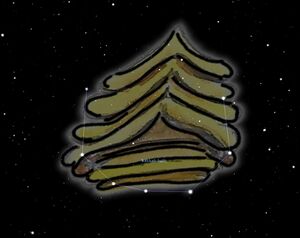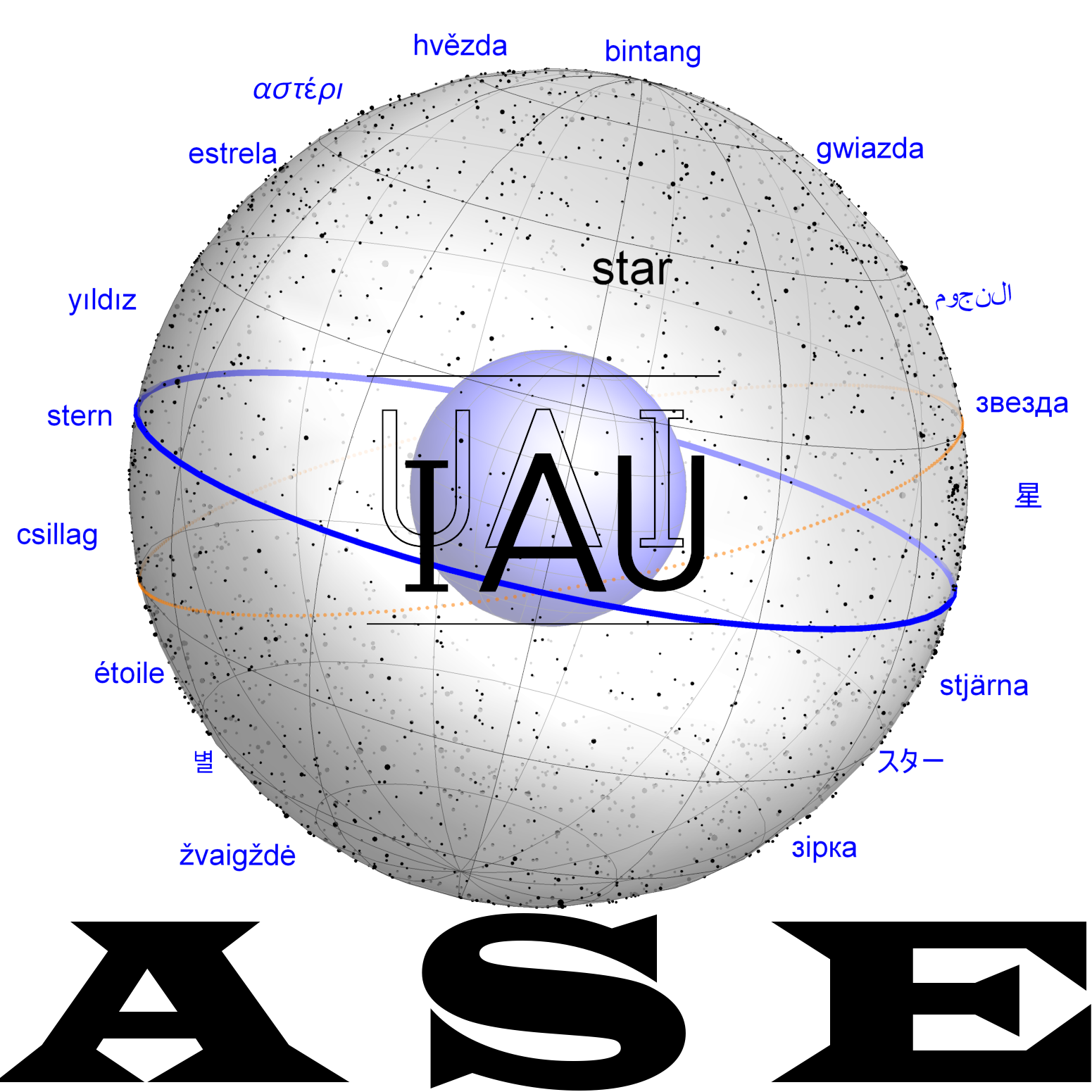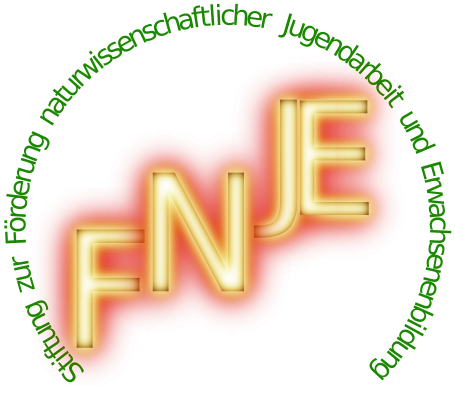GAM-ti: Difference between revisions
No edit summary |
No edit summary |
||
| Line 1: | Line 1: | ||
GAM = ''kippatu'', 'The Circle'. Lexical evidence suggests that the Sumerian reading this meaning of the sign GAM is gur<sub>2</sub>. Writings of the asterism's name GAM-ti add the phonetic complement 'ti' to assure the Akkadian kippatu. |
|||
| ⚫ | |||
| ⚫ | |||
<sup>mul</sup>GAM-''ti'' is Sumerian, with Akkadian equivalent ''kippatu'', The Circle. As an ancient Mesopotamian asterism, it is an alternative name for Corona Borealis (also called "asterism of dignity"), (Kurtik b03) [[BAL.TEŠ2.A|BAL.TEŠ<sub>2</sub>.A]]. |
|||
| ⚫ | |||
''I am not sure about translation 'ring' below - I don't find kippatu in CAD K with jewelry but a loop is good - lets look at scepter and loops in art??? -- and book chapter by Slansky and see Abram below??? and look for other stuff??? - we also have to figure out what to do about listing this as kippati rathern GAM-ti unless with GAM without the ti- ?????'' |
|||
| ⚫ | |||
<sup>mul</sup>GAM-''ti'' is Sumerian, with Akkadian equivalent ''kippatu'', The Circle. As an ancient Mesopotamian asterism, it is an alternative name for Corona Borealis (also called "asterism of dignity"), (Kurtik b03) [[BAL.TEŠ2.A|BAL.TEŠ<sub>2</sub>.A]]. The image intended by the constellation can best be identified with pitorial evidence for the 'rod and ring' in Mesopotamian art. See e.g. most recently Abrahm 2011<ref>M Abram (2011). A New Look at the Mesopotamian Rod and Ring. Studia Antiqua, Volume 10 Number 1 Article 5, BYU ScholarsArchive <nowiki>https://scholarsarchive.byu.edu</nowiki></ref> and Slansky<ref>Slanski, “The Mesopotamian 'Rod and Ring': Icon of Righteous Kingship and Balance of Power between Palace and Temple,” in Regime Change in the Ancient Near.</ref> what ever year it is.' |
|||
''- we also have to figure out what to do about listing this as kippati rathern GAM-ti unless with GAM without the ti- ????'' |
|||
Studia Antiqua |
|||
Volume 10 Number 1 Article 5 |
|||
December 2011 |
|||
A New Look at the Mesopotamian Rod and Ring: Emblems of |
|||
Time and Eternity |
|||
Mary Abram |
|||
C''an we place a circle/ring in the picture???''? |
C''an we place a circle/ring in the picture???''? |
||
| Line 21: | Line 11: | ||
==Dictionary== |
==Dictionary== |
||
===Kurtik with Hilder, Hoffmann, Horowitz, Kim=== |
===Kurtik with Hilder, Hoffmann, Horowitz, Kim=== |
||
The translation ''<nowiki/>'ring''' is occasionally given but we find it inappropriate. ''kippatu'' in CAD K with jewelry but a loop is good - lets look at scepter and loops in art |
|||
Var. names: GAM; = <sup>mul</sup>''kippatu'' "Ring, Circle"; |
Var. names: GAM; = <sup>mul</sup>''kippatu'' "Ring, Circle"; |
||
| Line 52: | Line 44: | ||
| |
| |
||
|- |
|- |
||
|'''GU-text.''' |
|'''GU-text.''' |
||
(P) <sup>˹mul˺</sup>''kip-pat'' kimin igi <sup>mul</sup>za.ba<sub>4</sub>.ba<sub>4</sub> <sup>d</sup>šar<sub>2</sub>.ur <sup>d</sup>šar<sub>2</sub>.gaz gu |
* (P) <sup>˹mul˺</sup>''kip-pat'' kimin igi <sup>mul</sup>za.ba<sub>4</sub>.ba<sub>4</sub> <sup>d</sup>šar<sub>2</sub>.ur <sup>d</sup>šar<sub>2</sub>.gaz gu |
||
* "Ring (ziqpu III: α CrB), or eye of Zababa (η Oph), Sharur (and) Shargas (λ, υ Sco)=: string" [Pingree-Walker 1988, BM 78161:26]; according to [Koch 1992, 59], igi <sup>mul</sup>''Za-ba''<sub>4</sub>-''ba''<sub>4</sub> is υ Oph. |
|||
|[[File:TheCircle Dignity BabAsterism.jpg|thumb|The Mesopotamian asterism of Dignity/ The Circle, painted by Jessica Gullberg (2021). ]] |
|[[File:TheCircle Dignity BabAsterism.jpg|thumb|The Mesopotamian asterism of Dignity/ The Circle, painted by Jessica Gullberg (2021). ]] |
||
|- |
|- |
||
Revision as of 20:17, 21 April 2025
GAM = kippatu, 'The Circle'. Lexical evidence suggests that the Sumerian reading this meaning of the sign GAM is gur2. Writings of the asterism's name GAM-ti add the phonetic complement 'ti' to assure the Akkadian kippatu.
mulGAM-ti is Sumerian, with Akkadian equivalent kippatu, The Circle. As an ancient Mesopotamian asterism, it is an alternative name for Corona Borealis (also called "asterism of dignity"), (Kurtik b03) BAL.TEŠ2.A. The image intended by the constellation can best be identified with pitorial evidence for the 'rod and ring' in Mesopotamian art. See e.g. most recently Abrahm 2011[1] and Slansky[2] what ever year it is.'
- we also have to figure out what to do about listing this as kippati rathern GAM-ti unless with GAM without the ti- ????
Can we place a circle/ring in the picture????
Dictionary
Kurtik with Hilder, Hoffmann, Horowitz, Kim
The translation 'ring' is occasionally given but we find it inappropriate. kippatu in CAD K with jewelry but a loop is good - lets look at scepter and loops in art
Var. names: GAM; = mulkippatu "Ring, Circle";
- 1) = ziqpu III (α Coronae Borealis, Gemma),
- 2) a group of stars in Corona Borealis [G. 65; AHw, 483a; Schaumberger 1952].
| Sources | Identifications |
|---|---|
| Three Stars Each.
Text Nv. 10. Intercalation scheme:
Observations during the time of Sargon II:
|
|
Lists of ziqpu stars.
|
|
GU-text.
|
|
| Calendar of daily risings and settings of the ziqpu-star.
See. [Schaumberger 1955, 247-251]. |
|
"Astronomical Diaries and Related Texts."
|
|
| Late astrology.
W 22554/2: ki-i múlkip-pat a-na ziq-pi izzazu(GUB)zu dSîn(30) attalû(AN.GI6) u2-ša[r-r]u-u2 "If the Ring culminates (and) the lunar eclipse should begin..." [SpTU III, 102:18]. See also U.197 obv. 5': múlkip-pat [...] [Sachs 1952, 74]. |
Additional
II. Identification.
Constellation:
= α, β Coronae Borealis [G. 65];
= stars with great brilliance in the western part of the Northern Corona; according to VAT 16436:3, contains 9 stars [Schaumberger 1952, 219]; it is α, β, γ, δ, ε, θ, ι, π, ρ CrB, according to [ASM, 88].
= Corona Borealis [ASM, 271].
Ziqpu III:
= α Coronae Borealis [Schaumberger 1952, 229; Pingree-Walker 1988, 321; Koch 1992, 59; ASM, 86].
See also (Kurtik b02) BAL.TEŠ2.A.
Historical Dictionaries
| Kurtik (2022, g05) | Gössmann (1950) |
|---|---|
| вар. названия: GAM; = mulkippatu «Кольцо, Круг»; 1) = ziqpu III (α Coronae Borealis, Гемма), 2) группа звезд в Северной Короне (Corona Borealis) [G. 65; AHw, 483a; Schaumberger 1952].
I. Источники. Наблюдение времен Саргона II: ina U[GU] / mulkip-pi-te u2-s[ar-ri] / ina UGU MUL taš-ka-[a-ti] / [i]t-tu-u2-aḫ [xx] «(Шторм) нач[ался] (во время кульминации) Кольца и [у]тих (когда кульминировали звезды) Трой[ни]» [Lanfranchi–Parpola 1990, 249:12ʹ–15ʹ]. Списки ziqpu-звезд. (1) AO 6478: a) 2 MA.NA KI.LA2 | 12 UŠ i-na qaq-qa-ri | 21 IGI 6 ME DAN[NA i-na šamê(AN)e | TA mulŠUDUN.ANŠE EGIR-ti | EN m[ulGAM-ti] «2 мины веса, 120 на земле, 21600 миль на небе / От Задней части Упряжи до Ко[льцa]», b) 2½ MA.NA MIN | ½ DANNA i-na KI.MIN (=ina qaqqari) | 27 IGI DANNA [ina KI.MIN] (=ina šamê) | TA mulGAM-ti | EN MUL ša2 maš-a-ti «2½ мины веса, 150 на земле, 27000 миль на небе от Кольца до звезды из Пары» [Thureau-Dangin 1913, 216:7–10; TU, 21:7–10; HBA, 132; Schaumberger 1952, 228–229]. (2) VAT 16436: múlkip-pat // 9 // 7 IGI 2 ME KUŠ3 «Кольцо // 9 (звезд) / 7200 локтей» [Schaumberger 1952, 226–227:20]. (3) Sippar Planisphere: a) 12 UŠ ana [mulGAM-ti] «120 до [Кольца]» (rev. 3), b) mul[GAM-t]i «[Кольц]о», на диаграмме кружочек из 9 точек (obv., Segment 6) [Horowitz–al-Rawi 2001, 171–173:3, 176–178]. GU-текст. (P) ˹mul˺kip-pat kimin igi mulza.ba4.ba4 dšar2.ur dšar2.gaz gu «Кольцо (ziqpu III: α CrB), или глаз Забабы (η Oph), Шарур (и) Шаргаз (λ, υ Sco): веревка» [Pingree–Walker 1988, BM 78161:26]; cогласно [Koch 1992, 59], igi mulZa-ba4-ba4 — υ Oph. Kалендарь ежедневных восходов и заходов ziqpu-звезд. См. [Schaumberger 1955, 247–251]. «Дневники наблюдений». (1) A[N...] / 3 KUŠ3 SIG kip-pat IGI «Марс появился на 3 локтя ниже Кольца» [AD II, No.-234: 7–9]. (2) При описании движения кометы: KUŠ? e kip-pat mi-šiḫ-šu2 ana ULU3 «…локтей? выше Кольца, ее хвост к югу» [AD III, No.-162 r. 9]. Текст Nv. 10. Интеркаляционная схема: ˹kip-pat˺ как звезда Ану — звезда AN.TA.GUB.BA в месяце тебету, см. d05DIL.BAT 1502. dPA u dLUGAL MUL2 AN.TA.GUB.BA | kip!-pat! ana ziq-pi 30 […] «Шуллат и Ханиш — (звезда) Антагубба. Кольцо кульминирует 30 […]» [Donbaz–Koch 1995, 76: i 10, ii 9' + Anm. 46]. Поздняя астрология. W 22554/2: ki-i múlkip-pat a-na ziq-pi izzazu(GUB)zu dSîn(30) attalû(AN.GI6) u2-ša[r-r]u-u2 «Если Кольцо кульминирует (и) лунное затмение должно начаться...» [SpTU III, 102:18]. См. также U.197 obv. 5': múlkip-pat […] [Sachs 1952, 74]. II. Отождествление. Созвездие: = α, β Coronae Borealis [G. 65]; = звезды с большим блеском в западной части Северной Короны; согласно VAT 16436:3, содержит 9 звезд [Schaumberger 1952, 219]; это α, β, γ, δ, ε, θ, ι, π, ρ CrB, согласно [ASM, 88]. = Corona Borealis [ASM, 271]. Ziqpu III: = α Coronae Borealis [Schaumberger 1952, 229; Pingree–Walker 1988, 321; Koch 1992, 59; ASM, 86]. См. также b02BAL.TEŠ2.A. |
Example |
| Kurtik (2022, k19) | |
| = mulGAM-ti «Кольцо, круг»; = ziqpu III, группа звезд в Северной Короне (Corona Borealis); см. g05GAM-ti, b03BAL.TEŠ2.A. |
References
- ↑ M Abram (2011). A New Look at the Mesopotamian Rod and Ring. Studia Antiqua, Volume 10 Number 1 Article 5, BYU ScholarsArchive https://scholarsarchive.byu.edu
- ↑ Slanski, “The Mesopotamian 'Rod and Ring': Icon of Righteous Kingship and Balance of Power between Palace and Temple,” in Regime Change in the Ancient Near.






